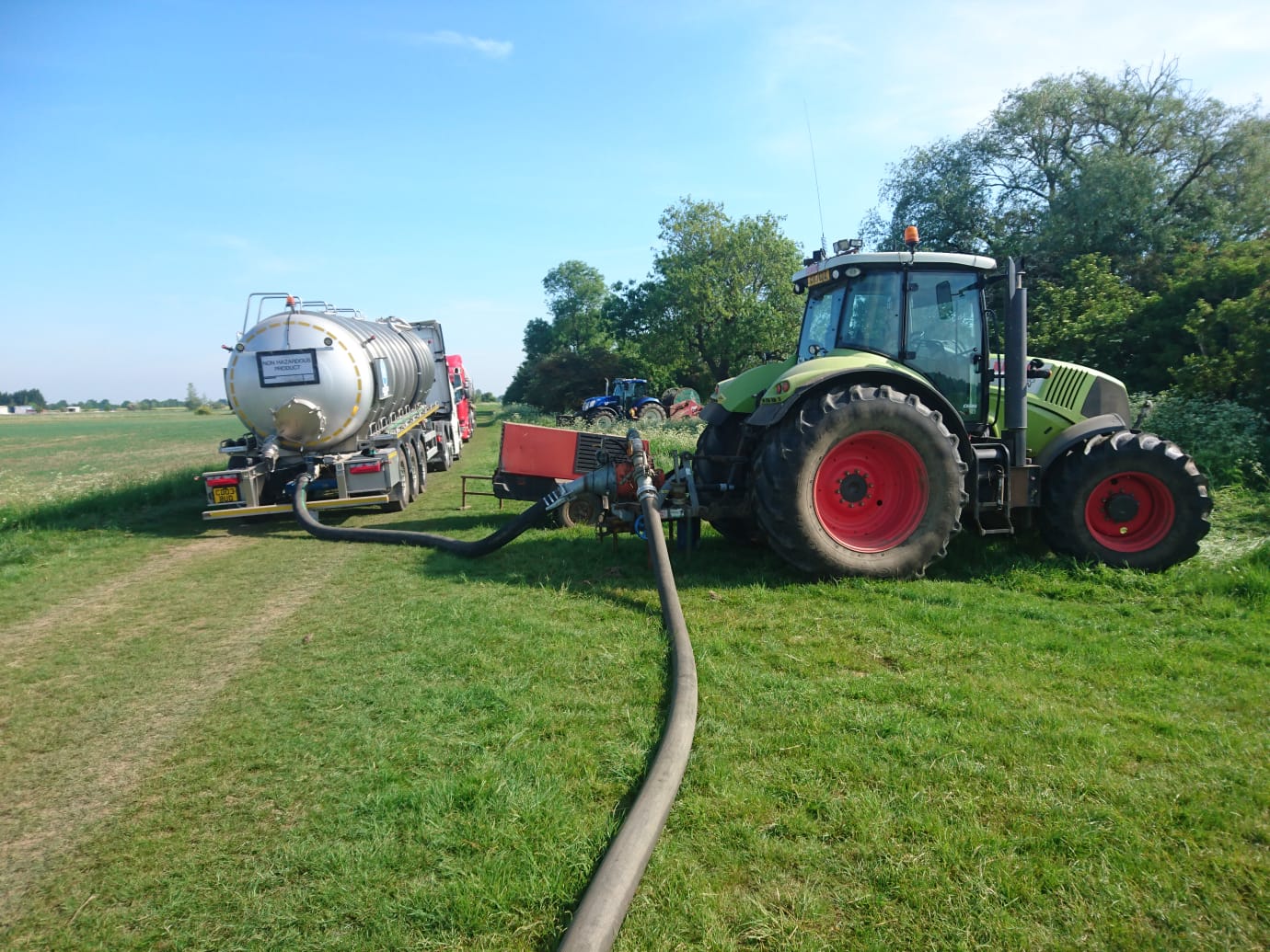23 March 2021
At Adapt Biogas our aim is to create renewable energy and nutrient rich digestate in a natural way, which closes the sustainable cycle. Our plant at Murrow utilises our on-farm cattle manure as a source of feed alongside a small amount of purpose-grown energy crops and vegetables. The manure, which is rich in nutrients, is macerated before use and to breakdown any solids. During the digestion process bacteria feed on the manure and the other biodegradable feed, in an oxygen free atmosphere, the conversion method which occurs creates biogas. This biogas goes through a cleaning system to extract biomethane, remove impurities and ensure that we achieve the consistent quality required for injection into the National Grid. Our biogas is also used to power four CHP (combined heat and power) units, for electricity export and powering our site. This enables a clean, renewable way of creating reduced emission utilities.
As well as our biomethane output, another beneficial output of our anaerobic digestion process is our nutrient rich liquid & solid digestate. The processed material from the digester is pumped through a screw press separator which extracts the liquid from the solid. The liquid is then stored in our two on-site purpose built lagoons whilst the solid is utilised for onsite capping or removed from site to neighbouring farms.
The liquid digestate is removed from the lagoon via our in-house spreading team Biocow Environmental Services Ltd, who carry out the spreading on behalf of local farms and feedstock growers.
Digestate is collected from the on-site storage lagoon, usually by HGV tanker fleet, and taken to the nearest access point to the field being spread. A pump is placed at this access point to deliver the digestate via high-pressure hose, from the tankers to the spreading system on the field. The spreading system used is a tractor mounted 24m umbilical dribble bar system. When the digestate is delivered to the spreading system, it is deployed evenly across the 24m span of the dribble bar system. A flowmeter on the spreading system ensures that the digestate is spread in-line with the spread rate agreed beforehand with the farmer. Generally, we would recommend a spread rate of between 25 to 30 cubic meters of digestate per hectare.

All spreading is undertaken in accordance with our EMS (Environmental Management System), to ensure the whole spreading process is completed in a safe and compliant manner. This umbilical dribble bar method is efficient, environmentally friendly and economic. It also means we able to spread consistently through the spring dry season (optimum spreading conditions) when crops may be progressing in growth. Soil compaction is minimised, as our lorries have no requirement to run over the fields, this aids crop yields and reduces water run-off.
The liquid digestate is an advantageous source of nitrates, phosphorus and potassium as well as other trace metals. It is well known that these elements are nutritionally important for productive fresh growth. Lack of these nutrients can be a cause of deficiencies within plants and crops.
- Nitrogen – The most important of the three, essential in the development of proteins and keeping plants healthy.
- Phosphorus – Vital in the process of photosynthesis, phosphorus gives plants the ability to store energy for use in future growth.
- Potassium – Strengthens the plant from the root upwards. This strength defends against diseases and cold/dry spells. Plants high in potassium will usually yield better whilst still being great in quality.
- An alternative to the use of digestate, an organic environmentally friendly fertiliser, is the use of synthetic fertilisers. Synthetic fertilisers are often oil based and are not only expensive to apply but in addition have many other disadvantages.
They can be easily overused (if not following application method correctly) which can cause burning of plants and a creation of toxic concentrations within the land.
- The toxicity created within the land can often cause leaching into waterways, causing contamination.
- They often do not contain micronutrients and require organic additions to ensure the plants are strong and able to resist diseases.
- Safety also needs to be considered when applying, if not applied correctly they can cause damage to human health.
Adapt Biogas is passionately driven to perfect the anaerobic digestion process for a truly green fuel supply. Our purpose is to nurture the growth of green energy generation and fully utilise the bacteria that makes it all possible. We are reducing greenhouse gases, in line with our wider and sustainable, carbon managed approach to anaerobic digestion. The increase in renewable production such as anaerobic digestion sites has seen a beneficial decrease in fossil fuel as a source of electricity across the UK, Adapt Biogas are proud to be a part of this.
Get in touch today to discuss spreading on local farming land or to hear more about what we can offer for O&M services at other anaerobic digestion sites.


